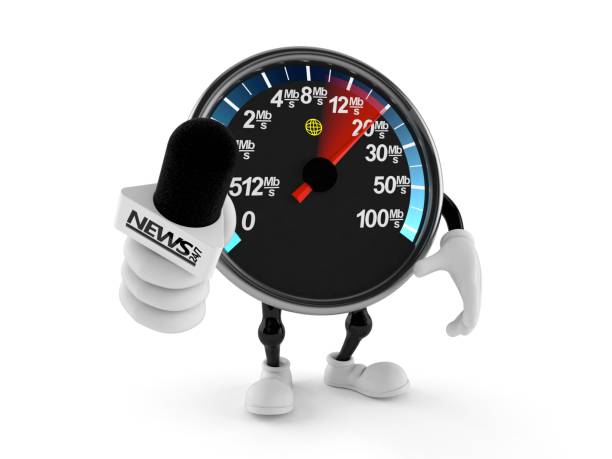Introduction
The Xfinity Speed Test is an online tool that allows Xfinity internet users to measure the actual performance of their connection. With internet usage becoming the backbone of business, education, streaming, and gaming, it is essential to know whether the promised download speed, upload speed, and latency (ping) are being delivered. By using the Xfinity Speed Test, customers can instantly check if their home internet is working at optimal performance.
In this detailed guide, we will explain what the Xfinity Speed Test is, how it works, why it matters, how to interpret the results, the role of bandwidth, FAQs, and calculation methods to help you understand speed metrics more deeply.
What is Xfinity Speed Test?
The Xfinity Speed Test is a free web-based tool developed by Comcast (the parent company of Xfinity) that allows users to measure their internet connection speed in real time. It evaluates:
- Download Speed – How fast data can be pulled from the internet to your device (measured in Mbps).
- Upload Speed – How fast data can be sent from your device to the internet (measured in Mbps).
- Latency (Ping) – The time taken for data to travel between your device and the internet server (measured in milliseconds).
- Jitter – Variation in latency, affecting video calls and gaming performance.
Why Use the Xfinity Speed Test?
- Accuracy – It tests against Comcast servers to provide realistic results for Xfinity customers.
- Troubleshooting – Helps identify network issues like slow Wi-Fi or overloaded bandwidth.
- Verification – Confirms whether you are receiving the speed promised in your plan.
- Performance Tracking – Monitors connection quality for gaming, streaming, and video conferencing.
How Does the Xfinity Speed Test Work?
When you start the test:
- A packet of data is sent from your device to a server.
- The server calculates how quickly the data travels back and forth.
- The tool then measures download and upload throughput in megabits per second (Mbps).
- The latency and jitter are calculated using round-trip timing of multiple packets.
Factors Affecting Xfinity Speed Test Results
- Wired vs. Wireless – Ethernet connections are faster than Wi-Fi.
- Network Congestion – More devices = slower speeds.
- Server Location – Closer servers reduce latency.
- Background Apps – Streaming, gaming, or downloads during the test can lower results.
- Router Quality – Outdated routers cannot support gigabit speeds.
Calculation Examples for Internet Speed
1. Converting Mbps to MB/s
Internet plans are advertised in Mbps (megabits per second), but downloads are shown in MB/s (megabytes per second).
- Formula: MB/s=Mbps8\text{MB/s} = \frac{\text{Mbps}}{8}MB/s=8Mbps
Example:
If your Xfinity plan is 200 Mbps: 200 Mbps÷8=25 MB/s200 \, \text{Mbps} ÷ 8 = 25 \, \text{MB/s}200Mbps÷8=25MB/s
So you can download a 1 GB file in about: 1000 MB÷25 MB/s=40 seconds1000 \, \text{MB} ÷ 25 \, \text{MB/s} = 40 \, \text{seconds}1000MB÷25MB/s=40seconds
2. Latency Impact
If your ping is 20 ms compared to 100 ms:
- In online gaming, every command response is delayed by 0.1 seconds at 100 ms, which can create lag.
- At 20 ms, response is nearly real-time, ideal for competitive gaming.
3. Bandwidth Sharing
If your home has a 400 Mbps plan and 4 devices are streaming HD videos (each needs ~8 Mbps):
- Total usage = 4 × 8 Mbps = 32 Mbps.
- Remaining bandwidth = 400 – 32 = 368 Mbps, available for other tasks.
This shows Xfinity plans can support multiple users simultaneously.
How to Run an Accurate Xfinity Speed Test
- Connect your computer directly to the router with Ethernet.
- Close background applications (Netflix, YouTube, downloads).
- Restart your modem/router before testing.
- Run the test multiple times a day to average results.
- Compare results to your subscribed plan (e.g., 200 Mbps, 400 Mbps, 1200 Mbps).
Interpreting Xfinity Speed Test Results
- 50–100 Mbps – Good for casual browsing, video calls, and 1–2 devices.
- 200–400 Mbps – Suitable for HD streaming, gaming, and 3–6 devices.
- 800 Mbps – 1.2 Gbps – Excellent for 4K streaming, work from home, cloud storage, and 10+ devices.
Common Xfinity Speed Plans (2025)
- Fast (400 Mbps) – Mid-tier households.
- Superfast (800 Mbps) – Power users.
- Gigabit Extra (1200 Mbps) – Large households, heavy streaming/gaming.
- Gigabit Pro (2000 Mbps) – Premium fiber plan for professionals.
FAQs
1. Is the Xfinity Speed Test free?
Yes, it is completely free to use for all internet users.
2. Can I use it without being an Xfinity customer?
Yes, the tool is available to anyone, but results are most accurate for Xfinity customers.
3. What is a good internet speed for gaming?
For online gaming, at least 25 Mbps download, 5 Mbps upload, and ping under 50 ms is recommended.
4. Why is my Xfinity Speed Test result lower than my plan?
Possible reasons include Wi-Fi interference, outdated equipment, or too many connected devices.
5. How can I improve my Xfinity speed?
Upgrade your router, use Ethernet, reduce congestion, and ensure you are on the correct Xfinity plan.
6. How accurate is the Xfinity Speed Test?
It is highly accurate because it connects to Comcast’s servers directly, minimizing external network interference.
7. How often should I run a speed test?
At least once a week, or whenever you notice buffering, lag, or slow downloads.
Conclusion
The Xfinity Speed Test is a powerful tool for measuring your actual internet performance. By understanding download speeds, upload speeds, and latency, users can determine whether their plan meets their needs. With proper calculations, you can estimate file download times, bandwidth sharing capacity, and gaming performance.

